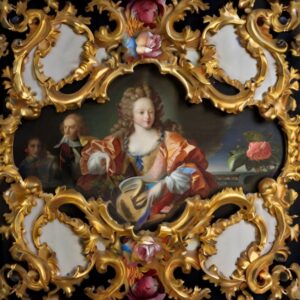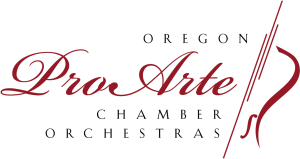Baroque music, which originated in the early 17th century and lasted until the mid-18th century, holds a special place in the hearts of music lovers worldwide. From the elaborate compositions of Johann Sebastian Bach to the spirited works of Antonio Vivaldi, this era’s music continues to captivate audiences. But what is it about Baroque music that keeps it relevant and cherished centuries later?
The Richness of Harmony and Counterpoint

One of the defining characteristics of Baroque music is its remarkable use of harmony and counterpoint, which together form the backbone of the era’s musical expression. Composers such as Johann Sebastian Bach and George Frideric Handel were true maestros of these techniques, capable of crafting intricate and mesmerizing melodies that seamlessly interwove to create a vibrant and complex tapestry of sound. Harmony in Baroque music involves the simultaneous combination of different musical notes to produce chords, enriching the texture and enhancing the emotional depth of a piece. Counterpoint, a technique where independent melodic lines interact with each other, offers a sophisticated and layered approach to composition. These interdependent yet distinct lines are skillfully woven together, each maintaining its individuality while contributing to a greater, unified whole. The result is a music rich in texture and depth, inviting listeners to embark on a journey of discovery with every note. For casual music lovers, this complexity can be thoroughly enjoyable, with melodies that are both pleasant and stimulating. For those with a more profound understanding of music theory, the intricate play of elaborate melodic lines reveals an ever-deepening array of nuances and details with each listen. It’s akin to peeling the layers of an onion, where every subsequent exploration uncovers new aspects and hidden meanings. The harmony and counterpoint in Baroque music exemplify the technical prowess of its composers and offer an immersive, multifaceted listening experience that continues to captivate audiences across centuries.
Emotional Expressiveness
Baroque music has a way of tugging at the heartstrings with its emotional expressiveness. The era is marked by the use of the ‘doctrine of affections,’ a belief that music could invoke and represent various human emotions. Whether it’s the joyous exuberance of Vivaldi’s “Spring” from The Four Seasons or the somber introspection of Bach’s “Air on the G String,” the emotional clarity and intensity of Baroque music can speak to our innermost feelings. It’s almost as if the music is telling a story, resonating with listeners on a deeply personal level.
The Baroque period is also known for its ornate and decorative style, which mirrored the art and architecture of the time. This aesthetic translates into the music through the use of ornamentation: trills, grace notes, and elaborate runs that embellish the main melody. These decorations add flair and showcasing the performer’s skill, making each rendition unique. The emphasis on personal interpretation means that modern performers can bring their own touch to Baroque pieces, making the music feel fresh and current despite its age.
The Role of Instruments
Baroque music introduced or popularized many instruments that are still prevalent today, such as the violin, harpsichord, and organ. The distinctive timbre of these instruments contributed to the unique sound of Baroque compositions. For instance, the harpsichord’s bright, percussive tones add a certain crispness that can’t be replicated by modern pianos. The violin’s versatility made it a star of the era, used both in orchestral settings and as a solo instrument in concertos and sonatas. This focus on instrumental music broadened the scope of what was possible musically and allowed for greater expressiveness and dynamism.
Another reason why Baroque music remains popular is its accessibility and versatility. The clear melodic lines and harmonies make it relatively easy for newcomers to appreciate. It also fits seamlessly into various venues and occasions, from grand concerts in majestic halls to more intimate chamber music settings. You can just as easily encounter Baroque music in modern settings, like being used as background music in movies, TV shows, and even commercials. Its adaptability has ensured that it remains part of the public consciousness.
Influence on Modern Music
Baroque music’s influence extends far beyond its own era, impacting composers and musicians across generations. Many techniques developed during the Baroque period serve as foundational elements in Western classical music. For example, the use of basso continuo—a continuous bass line that provides harmonic structure—is a precursor to the rhythm section in contemporary bands. Understanding these roots allows modern musicians to appreciate the rich heritage from which current music evolves.
The figureheads of Baroque music, such as Bach, Handel, Vivaldi, and Henry Purcell, have left an indelible mark on the world of music. Bach’s fugues, for instance, are as educational as they are enjoyable, offering insights into the intricacies of musical theory. Handel’s oratorios, like “Messiah,” transcend their religious contexts to become widely accessible works that resonate on a general human level. Vivaldi’s concertos, particularly “The Four Seasons,” are so popular that they’re almost standalone genres in their own right. The consistency and quality of these composers have ensured their works endure, continually being reinterpreted and reintroduced to new audiences.
Innovation in Form and Structure
Baroque composers were pioneers in exploring new musical forms and structures. The concerto, for example, was innovatively developed during this period, typically characterized by the contrast between a soloist and an ensemble. Vivaldi popularized the solo concerto with works like “The Four Seasons,” which play on the dynamic interaction between individual expression and collective harmony. Similarly, the fugue, a form involving a main theme that’s imitated by different voices in a “round” manner, showcases the intellectual rigor and creative ingenuity of Baroque music. This experimentation laid the groundwork for future musical advancements, making the Baroque era not just historically important but perpetually influential.
The Cultural Significance
Beyond its musical attributes, Baroque music also holds cultural significance. It’s a gateway into understanding the history, art, and social mores of the era. Many Baroque pieces were commissioned by the church or aristocracy, reflecting the societal structures and religious beliefs of the time. This aspect adds an extra layer of interest and appreciation when engaging with the music. For aficionados, learning about the context in which these compositions were created can be as enriching as the music itself. It’s like stepping into a time capsule and gaining insight into a pivotal period in cultural history.
